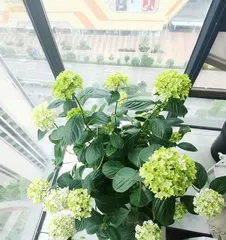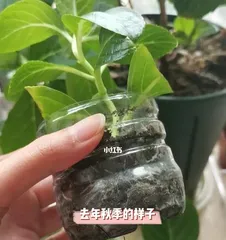Hydrangeas are very popular ornamental plants. With their vibrant colors and beautiful shapes, they can be used not only for home decoration but also in commercial horticulture. When we repot hydrangeas, the correct watering method is very important. Otherwise, they may suffer from problems such as drought or overwatering. This article will introduce the methods and techniques for correctly watering newly repotted hydrangeas.

Observe Soil Moisture
We need to observe the soil moisture to decide when to water. In the first few days after repotting the hydrangea, the soil is usually quite moist, so no watering is needed at this time.
The Correct Time to Water
We should water the hydrangeas in the morning or evening. The reason for this is that under the scorching sun during the day, the water will evaporate quickly and will not be enough to hydrate the plant.

Use Suitable Water Temperature
Do not use water that is too cold or too hot to water hydrangeas. It is best to use room temperature tap water or rainwater.
Avoid Overwatering
Overwatering can lead to the roots of the hydrangea being submerged, which affects the plant's growth and health. We should avoid overwatering and only moisten the soil each time.
Spraying
You can spray the hydrangeas with a spray bottle to keep the leaves moist, especially during the hot summer months.

Dig Some Small Holes
Digging some small holes in the newly repotted soil can help water penetrate the entire soil layer, ensuring the plant has adequate moisture.
Observe Leaf Color
If the hydrangea leaves start to turn yellow, wilt, or show other signs of distress, it may be necessary to increase the amount of watering.
Signs of Dehydration in Plants
When hydrangeas are dehydrated, their flowers and leaves will become wilted. If they are not watered for a long time, it will lead to death.
Keep the Soil Loose
After repotting, the soil may become compacted. We can use tools like a hoe to loosen the soil, making it easier for it to absorb water.
Do Not Place the Pot in Direct Sunlight
In the hot summer, we should not place the pot in direct sunlight, as this will cause the soil to evaporate quickly and easily lead to plant drought.
Watering Intervals
In spring and autumn, we can water at intervals instead of watering the plant every day. This helps to enhance the plant's drought tolerance.
Adjust According to Climate Conditions
When the weather is dry and the temperature is high, we need to increase the amount of watering. In humid weather, we should reduce the amount of watering.
Filter Water with a Water Quality Filter
If using tap water to water hydrangeas, it is best to filter the water with a water quality filter to prevent damage to the plant from chemicals.
Pay Attention to Drainage
After watering, pay attention to drainage to avoid waterlogging in the pot. Otherwise, this may lead to root rot or promote the growth of pathogens.
Correct watering can ensure the healthy growth of hydrangeas. We should follow the tips mentioned above, observe soil moisture, choose the right time and water temperature, pay attention to watering intervals, and improve drainage. Doing so can ensure the plant gets enough water and avoids problems like drought and overwatering.